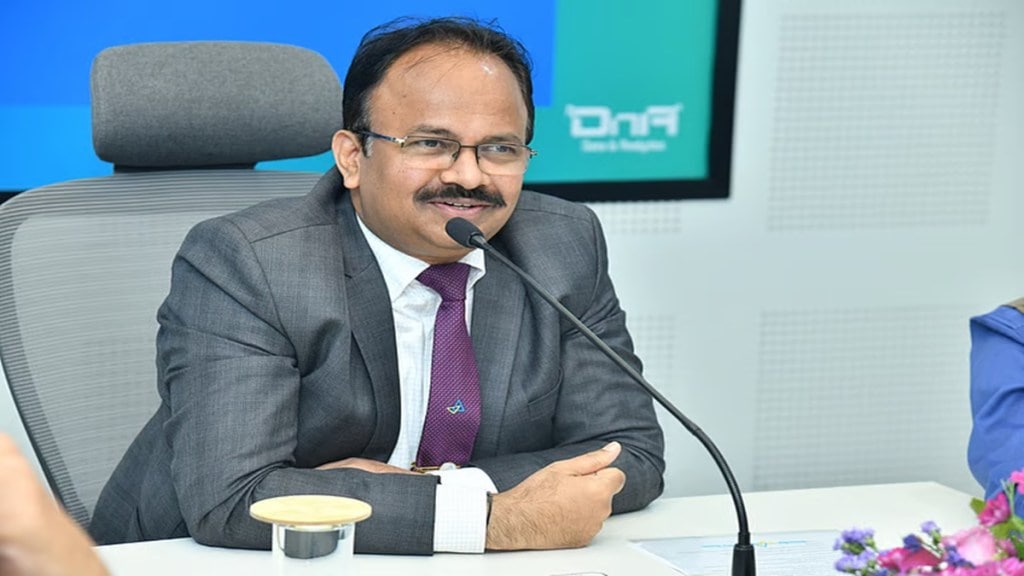Public sector lender Canara Bank is banking on strong credit growth, particularly from its retail and MSME portfolios, to counter falling net interest income and pressure on its net interest margin (NIM). MD & CEO K Satyanarayana Raju shares with Narayanan V the bank’s credit outlook, deposit mobilisation strategy, and recovery plans for FY26. Excerpts:
What is your credit growth outlook for FY26?
We recorded 12.42% growth in global gross advances (₹10.96 lakh crore) despite the June quarter traditionally being slow. This isn’t a one-quarter phenomenon; it reflects the strategy we have pursued over the past two years to ensure consistent credit growth. To achieve this, we set up dedicated processing hubs for MSMEs, agriculture, retail, corporate, mid-corporate, and large corporates. We also introduced a ranking system where monthly rankings are disclosed based on the quality of underwriting. This strategy has been delivering results for the past 3-4 quarters, with growth consistently above 10%. For the fourth quarter in a row, we are growing above 12%, and we don’t see any dip in credit demand. While our official guidance is 10-11%, I am confident of achieving over 12% growth this year.
Which segments will drive this growth?
Our focus remains on the retail, agriculture, and MSME (RAM) sectors, which together have grown 15% over last year. Our retail book alone has risen 34% to ₹2.35 lakh crore as of June quarter. Within retail, housing loans grew 14%, vehicle loans 22%, and a key contributor has been our secured personal loan product launched last April, backed by gold. Earlier, such loans were classified under agriculture gold loans, which require documentation, assessments, and other limitations. To tap urban and metropolitan customers, we introduced this product as an alternative, offering slightly higher returns than agriculture loans. This segment is now growing at around 22-25%. We also maintain a strong focus on education loans. These four components—housing, vehicles, secured gold-backed personal loans, and education—are the major drivers of our retail growth.
But corporate advances grew only about 10%.
We continue to be one of the preferred bankers for corporates. However, we don’t want to engage in an interest rate war because our cost of funds is higher than some peers. We won’t compromise margins just to grow in that segment, which is why corporate advances are growing at 10%. Our focus is on the Reverse Annuity Mortgage (RAM) sector, where returns are higher and risks are lower, and this segment is growing at 15%. Currently, our loan mix stands at 58:42 between RAM and corporate loans. Our internal target is to achieve a 60:40 mix, which we believe is ideal for a large balance sheet like ours.
Net Interest Income (NII) and Net Interest Margin (NIM) are under stress. How do you plan to improve them?
NII is certainly a concern for us. When the RBI reduces the repo rate, we must pass on the benefit to borrowers—especially those with repo-linked loans, which form about 45% of our loan book. However, it takes 6–9 months to pass on the impact to depositors, and during that time, we bear the burden. To offset this, we are focusing on top-line growth in advance. While there is no absolute reduction in interest income, the yield on advances has come down. Our aim is to grow average advances by about 12% during this period, which will help cushion NII and NIM. We have already reduced deposit rates, which will start yielding benefits. If there are no further rate cuts, we expect improvement from the third quarter onwards. However, if rate cuts continue, the pressure will persist into Q3 and Q4. To compensate, we are also boosting other operational income, recovering NPAs, and cutting operating expenses to protect margins.
Do you still see challenges in mobilising deposits?
I don’t see any challenge in mobilising retail term deposits, which are growing strongly. Two years ago, we garnered ₹40,000 crore in incremental retail term deposits, and last year we added ₹30,000 crore. In the first four months of this fiscal alone, we have already mobilised over ₹20,000 crore. However, growing low-cost (CASA) deposits is challenging in the current environment. Over the past two years, the gap between term deposit rates and CASA rates has been significant, prompting customers to shift their surplus funds into term deposits. Once term deposit rates fall below 5%, CASA growth will pick up again. Currently, term deposits are still above 6%, but as rates move towards 5% in a repo rate cut scenario. If there is not much difference between a savings bank interest rate and term deposit interest rates, then automatically people will tend to keep that money in the savings bank only.


